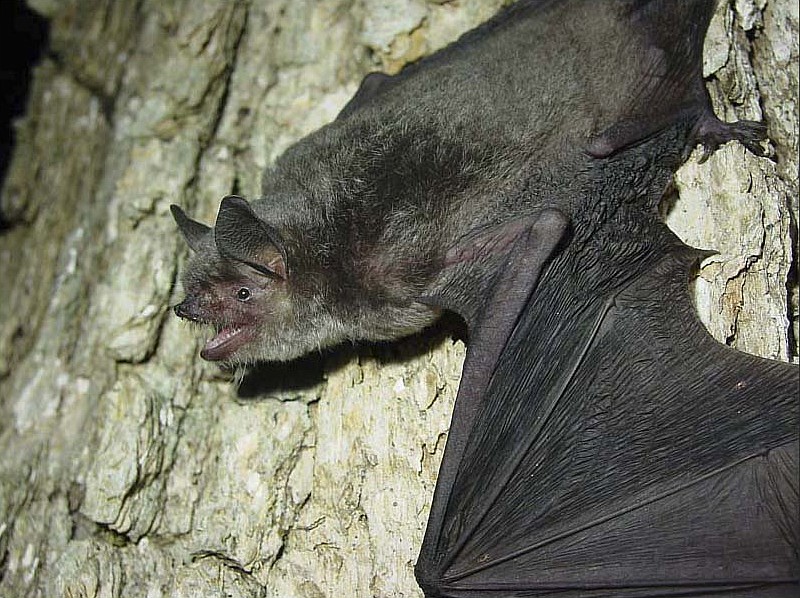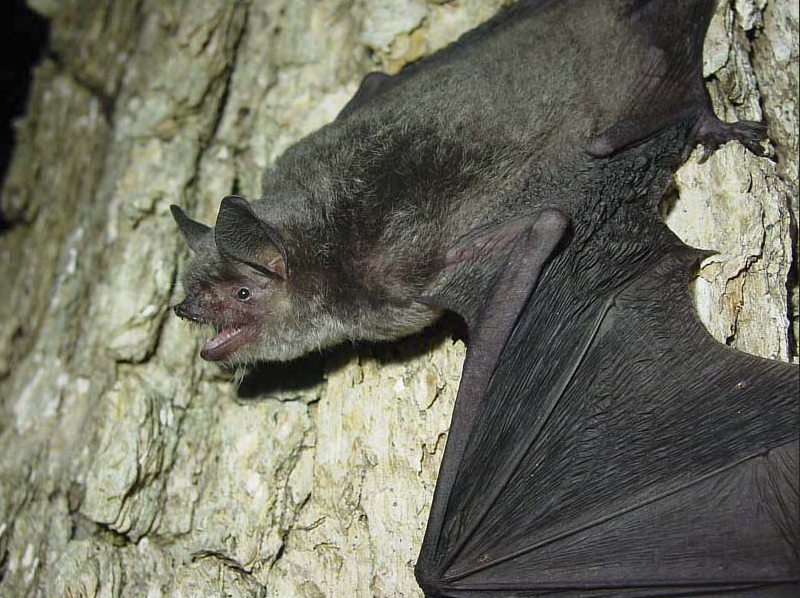Bats began chattering as they woke up, communicating with each other while flying around inside the cave and gathering for their next foraging expedition.
Then, they started trickling out, slowly at first, before flying out by the hundreds, the gray bat colony creating a cloud of sorts against the darkening Southeast Tennessee sky.
"It almost looks like smoke," TVA terrestrial zoologist Liz Hamrick said, describing the scene of a recent bat count event at Nickajack Cave.
For about 45 minutes, the bats flew out. A team of counters tallied more than 102,000 of them in yet another sign of this species' resilience against the white-nose syndrome that is decimating bat populations across the nation.
"Gray bats seem to be unique compared to the rest of our cave-dwelling species in the area," Hamrick said. "Because we have not seen the population decline for gray bats that we have for the other species."
The U.S. Fish and Wildlife Service estimates more than 5.7 million bats have died of white-nose syndrome since the disease was first documented in New York during the 2006-07 winter.
Many of Tennessee's 16 bat species, such as northern long-eared bats, little brown bats and tri-colored bats have been affected, even as all TVA and Tennessee Wildlife Resources Agency caves have been closed to humans in an effort to prevent the spread of the disease.
All federally owned caves remain closed as well, and groups such as the Southeastern Cave Conservancy are allowing only restricted access to the caves they manage that are home to at-risk bat populations.
White-nose syndrome is a fungus that appears on hibernating bats. Humans are believed to have played some role in its spread to, and now throughout, the United States. A case was discovered in Washington last year.
Still, even though gray bats can carry the disease, their populations have held steady and even increased over the years at the Nickajack Cave location where TVA conducts its annual count.
"To see a population of this number continuing to do well is very exciting and very rewarding," Hamrick said. "There are only a few spots I get to visit that have this many bats, and that's a unique site that I feel very lucky to be a part of."
Bat emergences at the cave occur from March to October, with the highest emergences coming during June and July. Spectators are allowed, but are encouraged to turn their boats off and keep them behind the no-wake buoys.
The Fish and Wildlife Service tells cavers to stick to a detailed and frequently updated decontamination protocol that is accessible at whitenosesyndrome.org.
Contact staff writer David Cobb at dcobb@timesfreepress.com or 423-757-6249.

